
Clarks Grove is a city in Freeborn County, Minnesota, United States. The population was 706 at the 2010 census.

The Tillamook County Creamery Association (TCCA) is a farmer-owned dairy cooperative headquartered in Tillamook County, Oregon, United States. The association manufactures and sells dairy products under the "Tillamook" brand name. Its main facility is the Tillamook Creamery, located two miles north of the city of Tillamook on U.S. Route 101.

Verghese Kurien was an Indian dairy engineer and social entrepeneur who led initiatives that contributed to the extensive increase in milk production termed the White Revolution.
Glanbia plc is an Irish global nutrition group with operations in 32 countries. It has leading market positions in sports nutrition, cheese, dairy ingredients, speciality non-dairy ingredients and vitamin and mineral premixes. Glanbia products are sold or distributed in over 130 countries. While Europe and the USA represent the biggest markets, the Group are continuing to expand into the Middle East, Africa, Asia Pacific and Latin America. Glanbia's primary listing is on Euronext Dublin. The Group has four segments; Glanbia Nutritionals, Performance Nutrition, Glanbia Ireland and Joint Ventures & Associates, with a combined workforce of over 7,000 employees in 32 countries.
Land O'Lakes, Inc. is an American member-owned agricultural cooperative based in the Minneapolis-St. Paul suburb of Arden Hills, Minnesota, United States, focusing on the dairy industry. The cooperative has 1,959 direct producer-members, 751 member-cooperatives, and about 9,000 employees who process and distribute products for about 300,000 agricultural producers, handling 12 billion pounds of milk annually. It is ranked third on the National Cooperative Bank Co-op 100 list of mutuals and cooperatives. The co-op is one of the largest producers of butter and cheese in the United States through its dairy foods business; serves producers, animal owners and their families through more than 4,700 local cooperatives, independent dealers and other large retailers through its Purina Animal Nutrition business; and delivers seed, crop protection products, agricultural services and agronomic insights to 1,300 locally owned and operated cooperative and independent agricultural retailers and their grower customers through its WinField United business.
The Cabot Creamery Cooperative is an American dairy agricultural marketing cooperative owned by Agri-Mark. The cooperative has a plant in Cabot, Vermont, but its administrative headquarters is in Waitsfield, Vermont.

Dairy Farmers of America Inc. (DFA) is a national milk marketing cooperative in the United States. DFA markets members' raw milk and sells milk and derivative products to wholesale buyers both domestically and abroad. Net sales in 2016 were $13.5 billion, representing about 22 percent of raw milk production in the United States.

Crystal Creamery was founded in 1901 by George Knox in Modesto, California as Crystal Cream & Butter. In 1921, Crystal Cream & Butter was purchased by Carl Hansen, a Danish immigrant. The Hansen family led the company for the next 86 years and pioneered many new technologies, growing Crystal Cream & Butter into one of the largest independent dairy processors in the state of California. In 2007, Crystal Cream & Butter was acquired by HP Hood, who sold it later that year to Foster Dairy Farms, which had been founded in 1941 by Max and Verna Foster, a venture that followed the 1939 founding of their Foster Farms. Today, Crystal Creamery claims to be the "largest privately owned dairy in California."
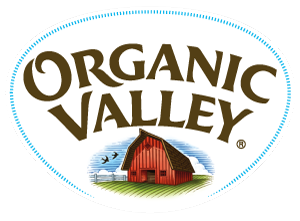
Organic Valley (OV) is an organic food brand and independent cooperative of organic farmers based in La Farge, Wisconsin, United States. Founded in 1988, Organic Valley is the nation's largest farmer-owned organic cooperative and one of the world's largest organic consumer brands.

The Femco Farms consisted of five farm properties established in Wilkin County, Minnesota, United States, in the 1920s and 1930s to experiment with livestock breeding and agricultural diversification. They were created by Frederick E. Murphy, publisher of the Minneapolis Tribune newspaper, to demonstrate improved techniques like crop rotation that could benefit farmers. The Femco Farms became famous for their influential practices, and especially for their incredibly productive dairy cows. The best preserved of the five properties, Femco Farm No. 2, was listed on the National Register of Historic Places in 1980 for its local significance in the area of agriculture.

The National Dairy Shrine is an American dairying group founded in 1949 and based in Wisconsin. The shrine promotes the dairy industry and records its history. As of 2007, the organization had over 18,000 members from most facets of dairying. It holds an annual ceremony where it inducts members of the dairy industry into its hall of fame.

Humboldt Creamery was formerly an agricultural marketing cooperative located on the California North Coast currently owned by Foster Farms Dairy of Modesto, California.

Prairie Farms Dairy is a dairy cooperative founded in Carlinville, Illinois, and now headquartered in Edwardsville, Illinois, a suburb of St. Louis. As a dairy cooperative, Prairie Farms receives milk from producers and converts it into many different products, including cheese, butter, ice cream, sour cream, cottage cheese, various dips, yogurt, and fluid milk. Prairie Farms also produces and sells juices, flavored drinks, and pre-made iced tea.
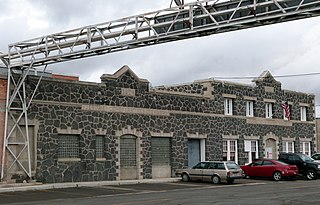
The Jerome Cooperative Creamery is a cooperative creamery and also refers to historic lava rock structures used by the creamery on Birch Street in Jerome, Idaho, United States. The structures were listed on the National Register of Historic Places on September 8, 1983. They were built in 1915, 1924, and 1933 by master stonemason H.T. Pugh who popularized the use of lava rock in the Jerome area.
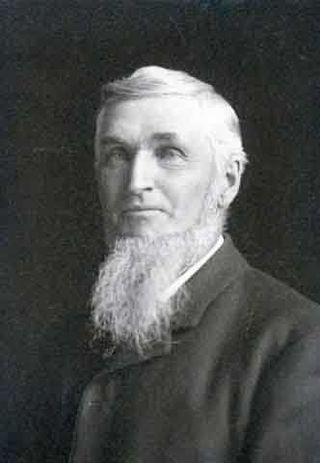
Oren Cornelius Gregg was a farmer and educator from Minnesota. In the 1880s, agricultural education in Minnesota was in trouble: farmers would not travel to the Twin Cities for classes, and university students did not want to study farming. Gregg, a successful dairy farmer from Lyon County, saved the day by bringing lectures directly to farmers. Beginning in 1885, he led the Minnesota Farmers' Institute, a public lecture series that became the agricultural extension service at the University of Minnesota. Through the institutes that he held across the state, Gregg encouraged farmers to diversify their crops and taught them how to make dairy farming more efficient.
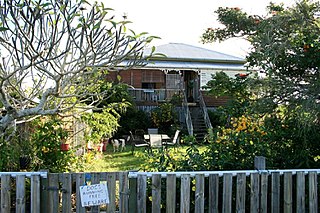
Colonsay Farm is a heritage-listed farm at 125 Doolong Road, Kawungan, Fraser Coast Region, Queensland, Australia. It was built in 1909. It is also known as Doolong Farm. It was added to the Queensland Heritage Register on 11 March 2011.
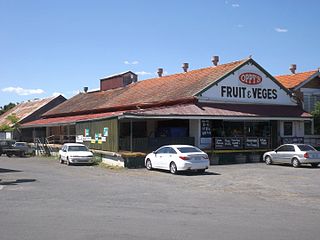
The Boonah Butter Factory is a heritage-listed former butter factory in Boonah, Scenic Rim Region, Queensland, Australia. Constructed in 1916, it is a prominent landmark at the intersection of Boonah-Rathdowney Road and Railway Street on the northern entry to Boonah. During the first part of the twentieth century, it was one of the most modern butter factories in the Commonwealth, the largest butter factory in the Southern Hemisphere, had the second highest output of butter in Queensland and was a major supplier of dairy products to Brisbane. The former Boonah Butter Factory office, which is currently the premises of Flavours Cafe, is on the Local Heritage Register of the Scenic Rim Regional Council in acknowledgement of the site's historic, aesthetic and cultural significance.


















